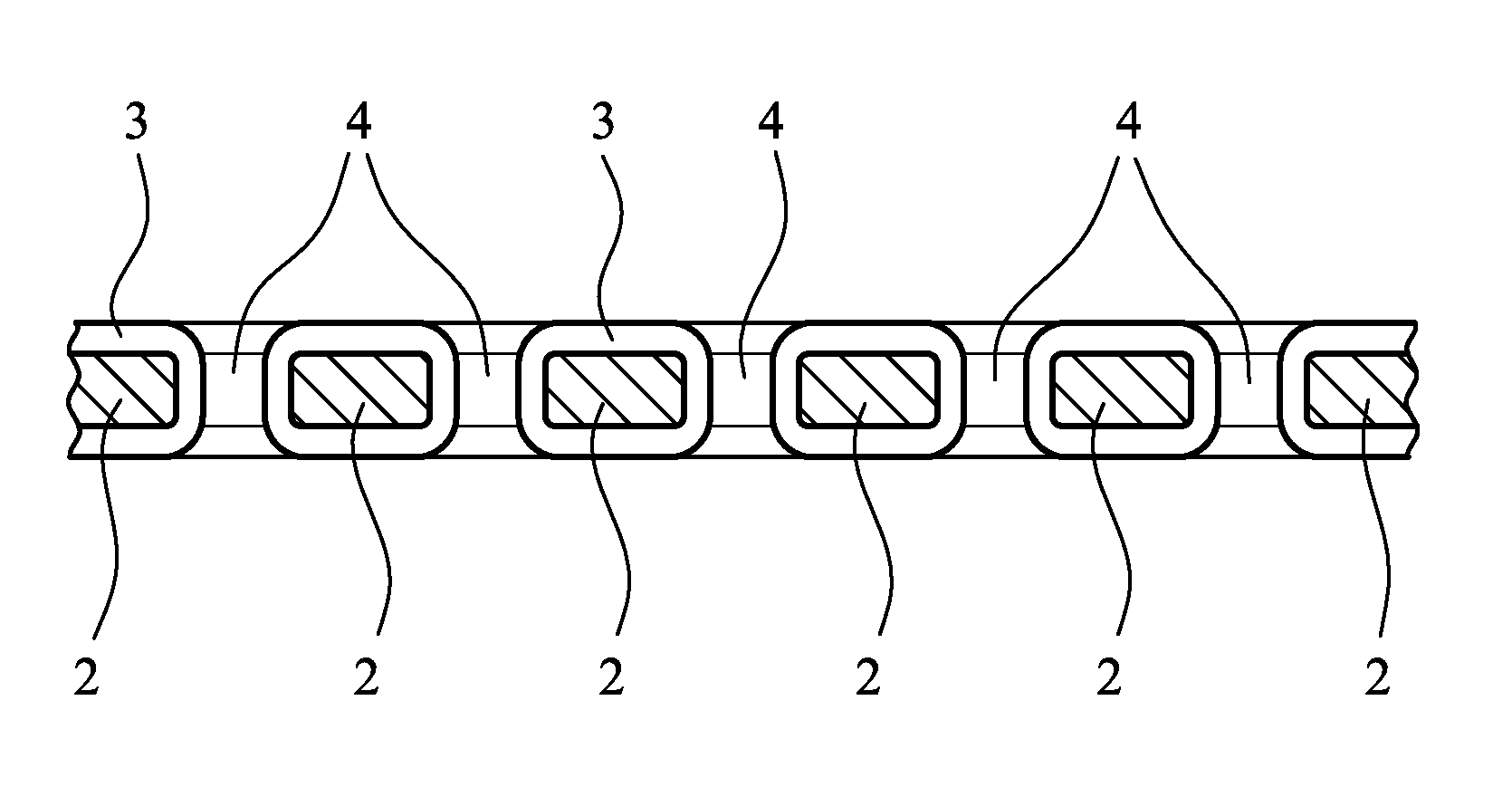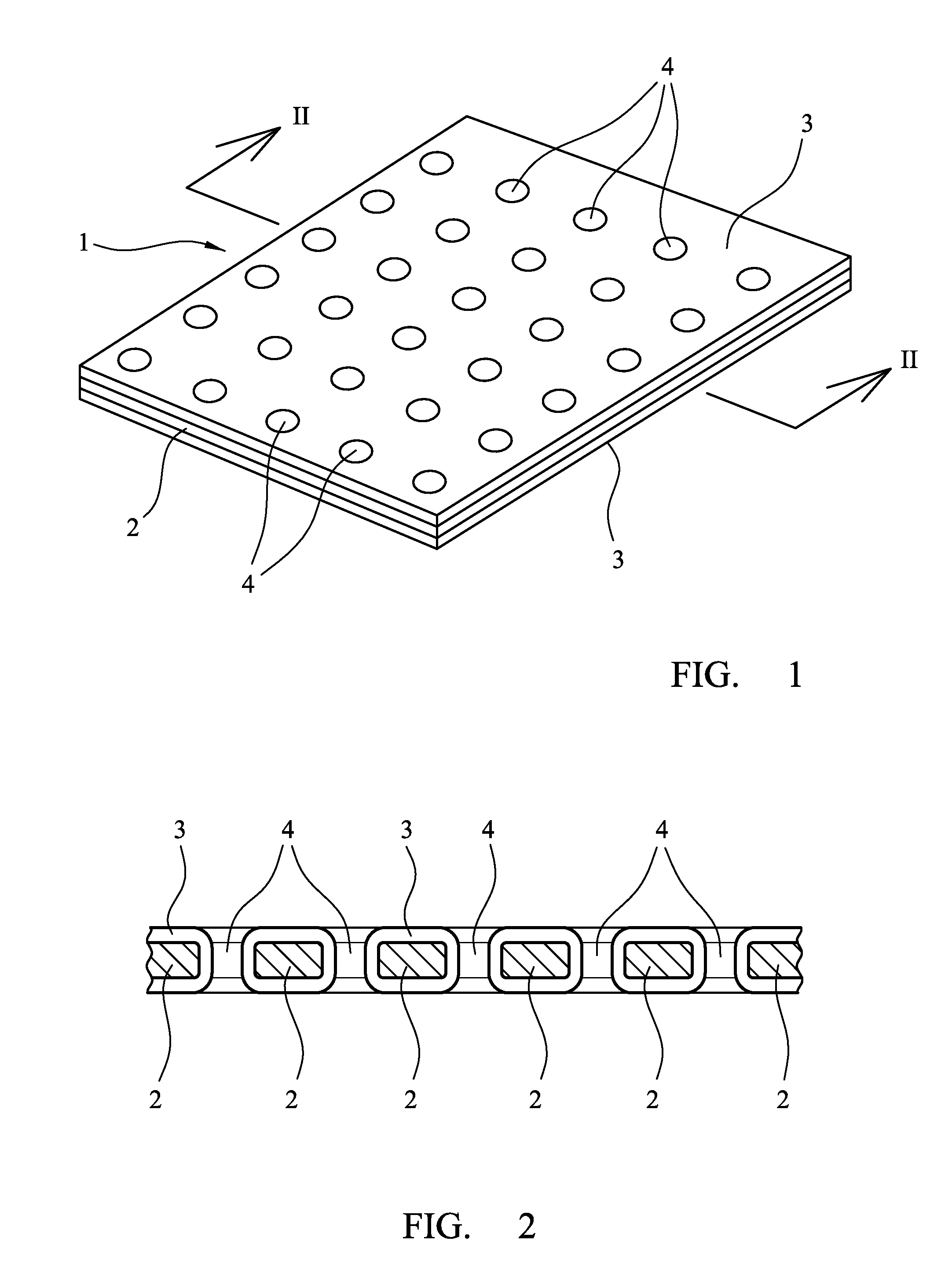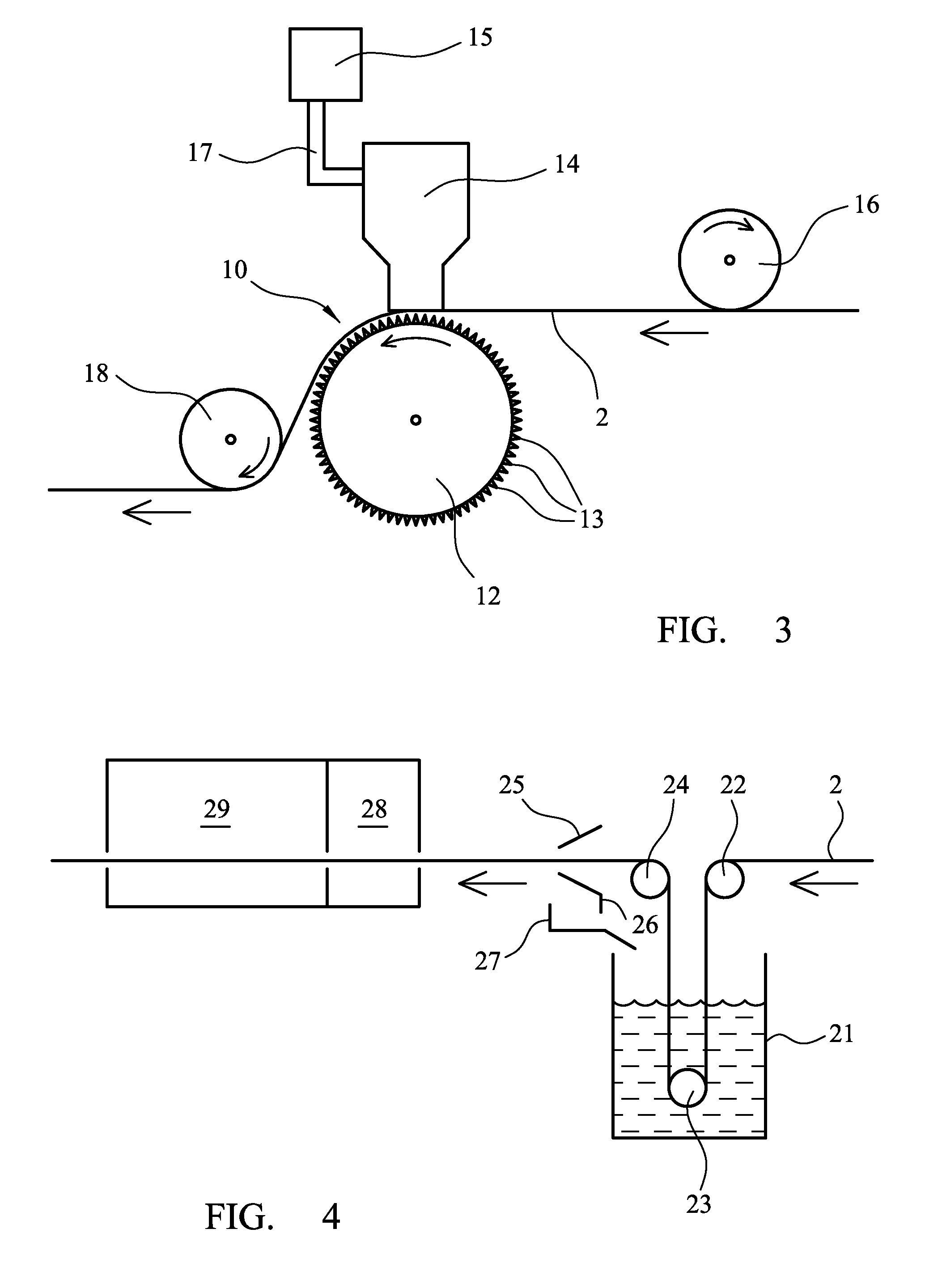Non-adherent wound dressing
a non-adherent, wound dressing technology, applied in the field of non-adherent wound dressing, can solve the problems of affecting the healing process, affecting the healing effect, and affecting the healing effect, and achieve the effect of reducing the risk of infection, and reducing the healing
- Summary
- Abstract
- Description
- Claims
- Application Information
AI Technical Summary
Benefits of technology
Problems solved by technology
Method used
Image
Examples
Embodiment Construction
[0026]According to a first aspect of the invention there is provided a non-adherent wound dressing comprising a substrate in the form of a perforated sheet of melt-blown non-woven material, the substrate being impregnated with, and coated on both sides with, a silicone gel.
[0027]The dressing according to the invention is advantageous for a number of reasons. First, the substrate, being of a melt-blown non-woven material, is readily extensible in all directions, enabling the dressing to be stretched and so facilitating its secure application, even to irregularly shaped parts of the body. Secondly, because the substrate is impregnated with the silicone gel, the silicone is securely fixed to the substrate, minimising the likelihood of silicone being separated from the dressing during use. Because the melt-blown material of the substrate is non-fibrous, there is no risk of loss of fibrous material into the wound to which the dressing is applied in use. The dressing may also be readily m...
PUM
| Property | Measurement | Unit |
|---|---|---|
| thickness | aaaaa | aaaaa |
| thickness | aaaaa | aaaaa |
| thickness | aaaaa | aaaaa |
Abstract
Description
Claims
Application Information
 Login to View More
Login to View More - R&D
- Intellectual Property
- Life Sciences
- Materials
- Tech Scout
- Unparalleled Data Quality
- Higher Quality Content
- 60% Fewer Hallucinations
Browse by: Latest US Patents, China's latest patents, Technical Efficacy Thesaurus, Application Domain, Technology Topic, Popular Technical Reports.
© 2025 PatSnap. All rights reserved.Legal|Privacy policy|Modern Slavery Act Transparency Statement|Sitemap|About US| Contact US: help@patsnap.com



